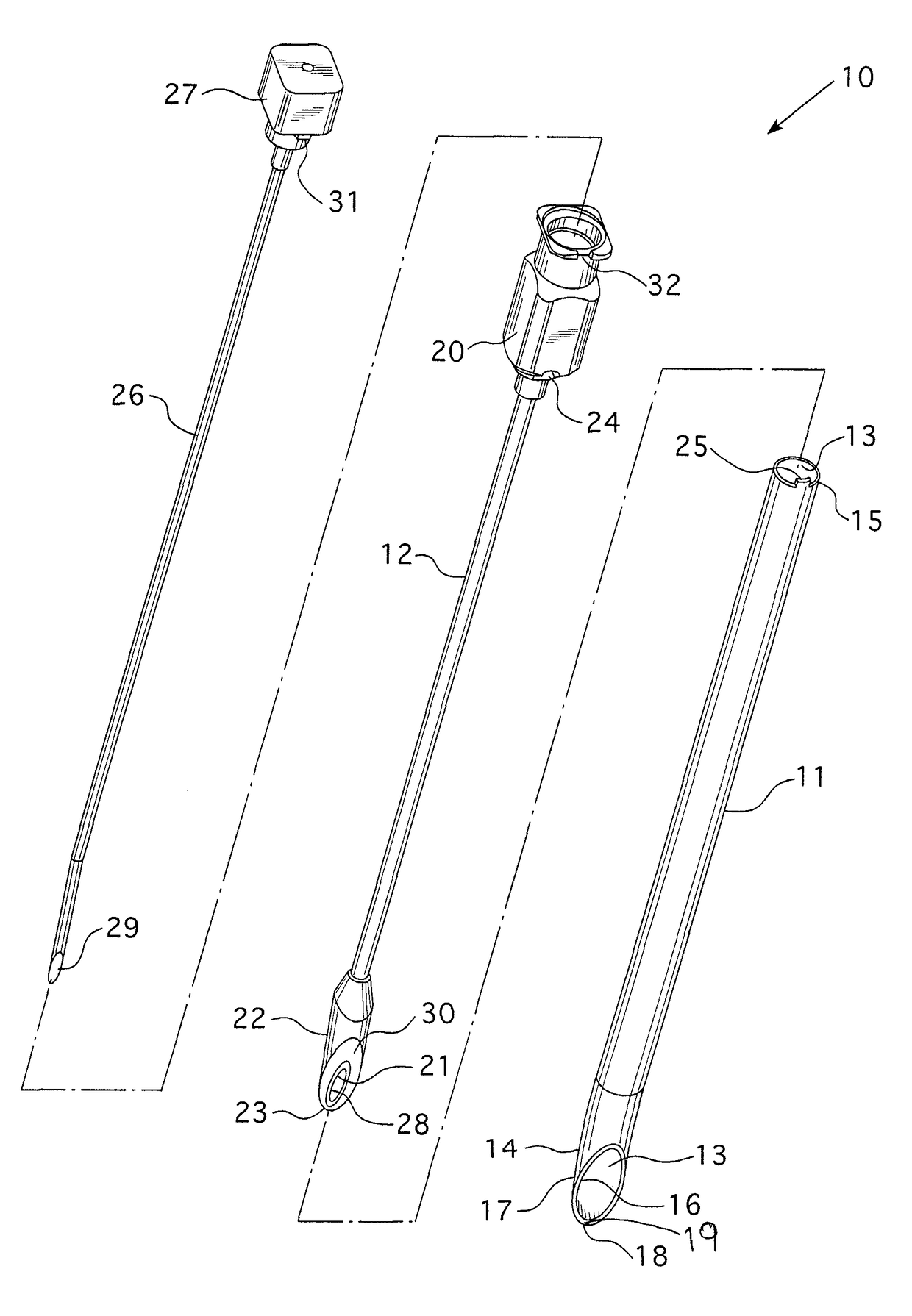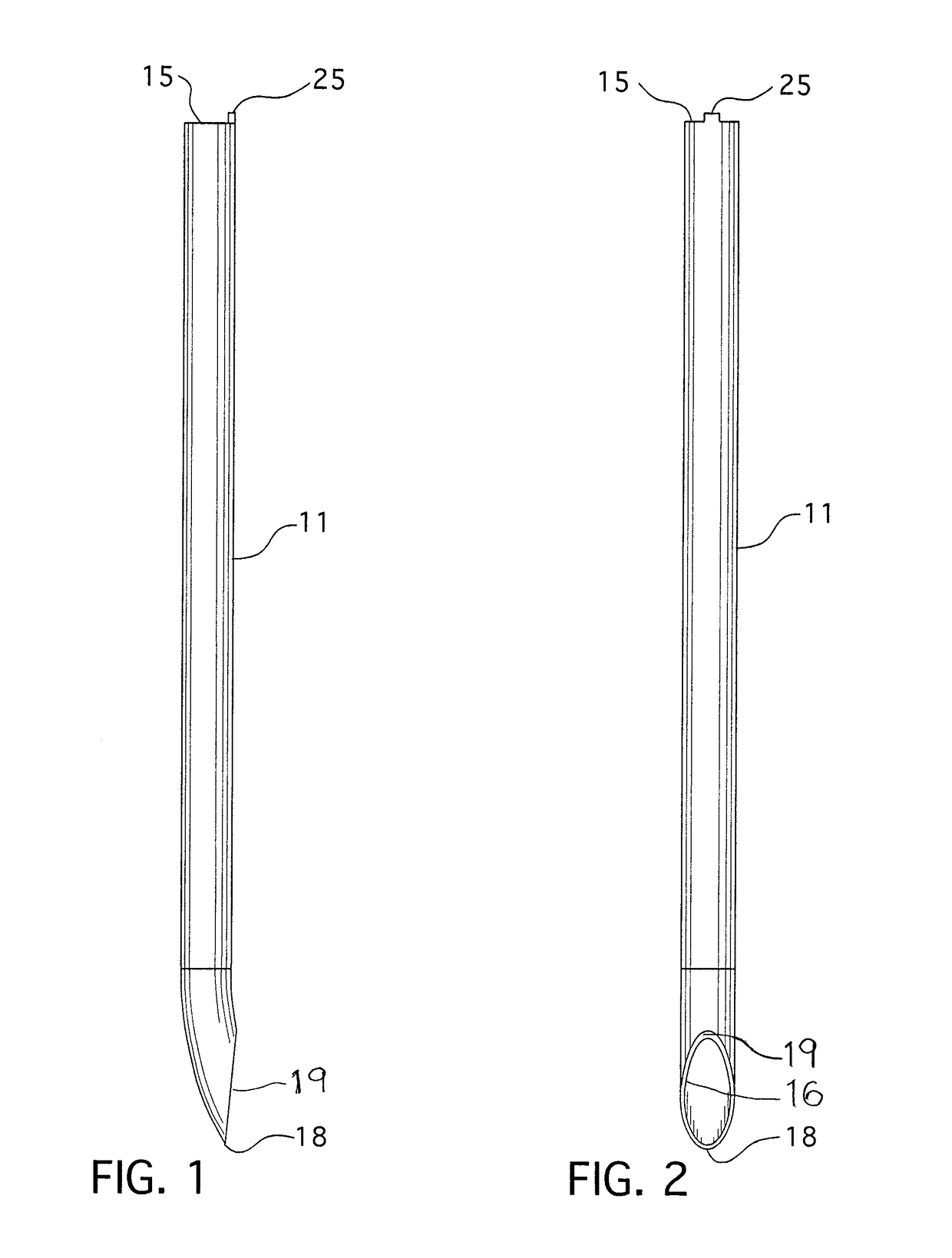Apparatus and method for safely inserting an introducer needle into epidural space
a technology of introducer and introducer sleeve, which is applied in the field of epidural needle assembly for safely introducing introducer, can solve the problems of inability to precisely introduce and position the introducer sleeve needle, and achieve the effect of safe access and loss of resistan
- Summary
- Abstract
- Description
- Claims
- Application Information
AI Technical Summary
Benefits of technology
Problems solved by technology
Method used
Image
Examples
Embodiment Construction
[0034]Referring to FIGS. 1 through 6, the epidural needle assembly 10 of the present invention is comprised, at a minimum, of the combination of large bore introducer sleeve needle 11 and syringe needle 12. Elongated tubular introducer sleeve needle 11 is provided with a lumen 13 extending from its distal tip 14 to its proximal end 15, with a beveled side opening 16 at its distal end. Introducer sleeve needle 11 is also provided with a curved distal tip 17 having a flesh or tissue piercing point 18 at its distal tip.
[0035]Introducer sleeve needle 11 is a large bore needle which is provided to allow the insertion of larger objects, such as a paddle lead, flat lead or a wire lead, into the epidural space after the tip 14 has been inserted into the epidural space. All components shown are constructed of surgical stainless steel or an equivalent thereof.
[0036]Syringe needle 12 is provided at its proximal end 15 with a conventional hub 20 for connecting a conventional plunger actuated sy...
PUM
 Login to View More
Login to View More Abstract
Description
Claims
Application Information
 Login to View More
Login to View More - R&D
- Intellectual Property
- Life Sciences
- Materials
- Tech Scout
- Unparalleled Data Quality
- Higher Quality Content
- 60% Fewer Hallucinations
Browse by: Latest US Patents, China's latest patents, Technical Efficacy Thesaurus, Application Domain, Technology Topic, Popular Technical Reports.
© 2025 PatSnap. All rights reserved.Legal|Privacy policy|Modern Slavery Act Transparency Statement|Sitemap|About US| Contact US: help@patsnap.com



